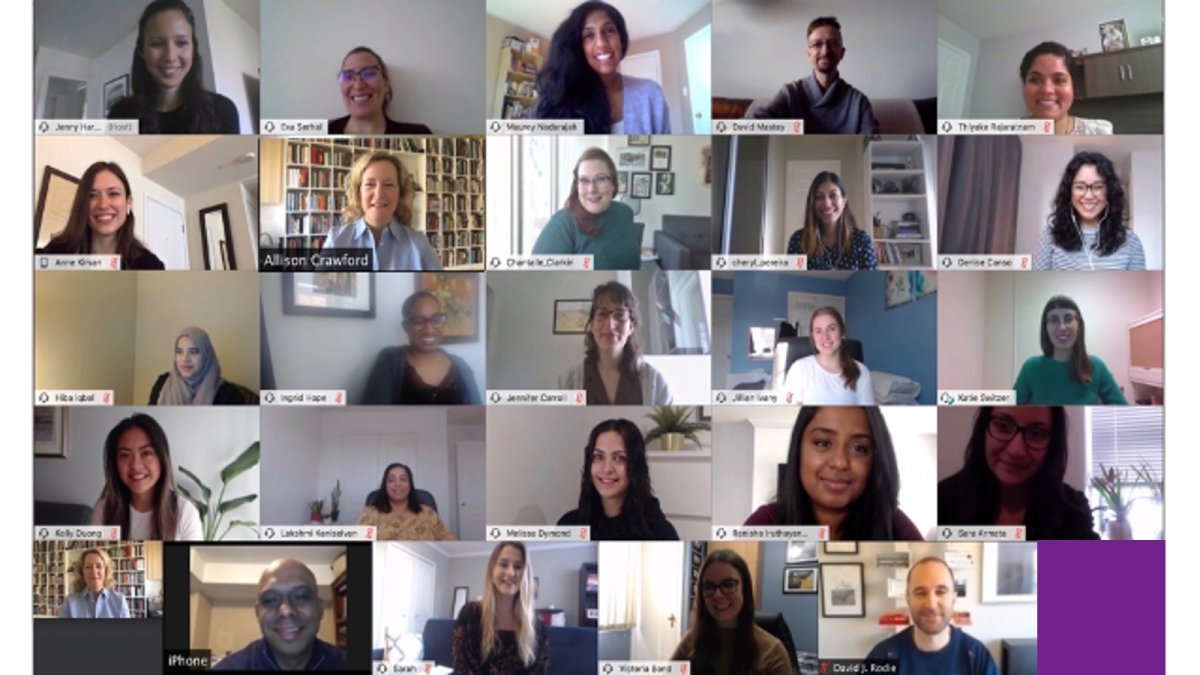Support strong Canadian climate journalism for 2025
The provision of virtual care for mental health is expanding rapidly in the face of the COVID-19 pandemic, which has increased the stress of daily life and has made in-person connection to deal with it much more difficult.
Advocates and practitioners say they hope and expect the crisis response can evolve into a more flexible way of providing mental health care even after social-distancing restrictions are lifted.
At Toronto’s Centre for Addiction and Mental Health (CAMH), some 3,000 virtual care visits were done in April — roughly the same amount it saw for all of 2019.
“It’s changing the nature of care,” said Dr. Allison Crawford, who leads the centre’s virtual care operations. “This innovation curve is a positive outcome, one positive outcome out of a very difficult experience, and it’s really enabling us to get everyone on board and trial new modalities of care more broadly.”
While virtual care only accounted for a fifth of the roughly 15,000 in-person visits CAMH typically receives each month (the centre’s staff donned personal protective equipment to conduct another 3,000 urgent visits last month), further expansion is planned.
Crawford said virtual versions of its in-person group therapy — cancelled since the pandemic — would come online within weeks and the centre now has 400 practitioners trained in virtual care compared to just 50 before the pandemic.

Young people likely to benefit from more virtual care
The transformation could prove especially useful for young people, who are broadly underserved by existing mental health services and want digital solutions to a range of pressing health and well-being needs, according to Dr. Joanna Henderson, the director of CAMH’s Margaret and Wallace McCain Centre for Child, Youth & Family Mental Health.
She said the broader health-care system’s rapid response to the pandemic shows how digital technology could improve youth mental health care over the longer term.
Henderson, who is also executive director of Youth Wellness Ontario, said young people want virtual care to go beyond online video therapy sessions to include things like chat groups and connection with peer support workers, which doesn’t always need to involve live interaction.
Young people also want services to be available when they need the support, including in the evenings and on weekends, she said, adding they also tell her they want more walk-in services and to not have to retell their whole life story in order to access services to deal with acute stressors, such as exams or a breakup.
“What is really intriguing and exciting about the capacity of a virtual platform is to really think about how to capture that integrated approach and allow young people to be their whole self in that space and get what they need across these different parts of their life,” she said.
She said the multiple overlapping ways COVID-19 is disrupting daily life show mental health care should also be more expansive.
“How do we redefine mental health to extend beyond anxiety and depression to take into consideration economic concerns, delays around education, implications for intimate partner relationships?” she said.
A study done by CAMH and the Institute for Clinical Evaluative Sciences released in March showed that 97 per cent of Ontarians with urgent mental health needs were unable to access publicly funded physician psychotherapy.
“The need for innovations in mental health to improve access and quality of care is urgent,” the study’s lead author Dr. Paul Kurdyak said at the time.
Surveys conducted since the pandemic shut down much of Canada’s economy have shown stress and anxiety have spiked for many people.
Half of the more than 1,900 Canadians polled by Angus Reid said that their mental health has worsened in recent weeks, including 24 per cent who said their financial situation had not deteriorated.
A Nanos Research poll conducted on behalf of the Mental Health Commission of Canada (MHCC) (PDF link here) found nearly 40 per cent of more than 1,000 people polled reported their mental health had worsened since the outbreak. But more than three in four had almost never or never sought mental health information online in the past month.
Governments pledging funds
The expansion of online services in the face of the pandemic has the backing of both the federal and Ontario governments, which early on allowed clinicians to bill the provincial healthcare system for services delivered remotely.
“If we can use apps to order dinner and video chats to stay in touch with family, we can use new technology to keep each other healthy,” Prime Minister Justin Trudeau said Sunday as he pledged $240 million to expand online health care.
Ottawa last month launched an online portal, Wellness Together Canada, to connect people in crisis who register to free support.
On Tuesday, the Ford government said it was launching an online Cognitive Behavioural Therapy (iCBT) program at no out-of-pocket cost to Ontarians, part of a $12-million emergency mental health fund.
Not a panacea
Both Henderson and Crawford said that while virtual care can improve access to mental health care for people with children, as well as those with mobility issues or transportation challenges, it can also pass by those with poor or non-existent internet connections or who cannot access a device.
They and other health-care professionals also noted that ensuring the privacy and confidentiality of patients remained a concern.
Virtual care is not a panacea for other reasons, according to Dr. Keith Dobson, a professor of clinical psychology at the University of Calgary.
He said virtual care is less than ideal for helping those at risk of hurting themselves, people with eating disorders, and those with anxiety that may manifest in shaking or other visual cues.
The act of having to come in for an appointment can itself be therapeutic for someone who presents with avoidance as part of their social anxiety or depression, said Dobson, who also works as a researcher and expert for the MHCC.
Dobson also said it might prove difficult to transfer group therapies to virtual delivery, including family therapy, where the clients would all be in one space and the clinician in another.
“From a clinician’s perspective, we feel there are many things we feel we don’t get out of a distance relationship; we can’t see all the body dynamics,” he said.
Still, he said that while the shift online may abate somewhat after the crisis, the trend is likely here to stay.
“My prediction is that we’ll see something of a movement back towards face-to-face therapies,” he said. “My suspicion is that most clinicians prefer to see their client face-to-face at least once, perhaps during the informed consent process and during the assessment ... but that as the care moves it along, it might be quite possible to move towards more distance therapy.”
“The question has always been: How are we going to implement it and who’s going to fund it? And now that there is a funding mechanism and a real need to develop these services, my guess is we’re going to be doing that development work ... my prediction is that once we don’t have to do it this way, we’ll continue anyway because we’ll find that it is effective for many people.”
Alastair Sharp / Local Journalism Initiative / Canada's National Observer






Comments
This almost proves something healthcare people know by intuition! Of course, as a single strategy, it isn't a panacea for everyone! Adding virtual visits to any and all physicians and healthcare professionals handling of their patients simply increases and improves the ways people can be helped - as in different drugs and treatments for physical problems! It's a no-brainer in these times of increased awareness of the need for mental health care!